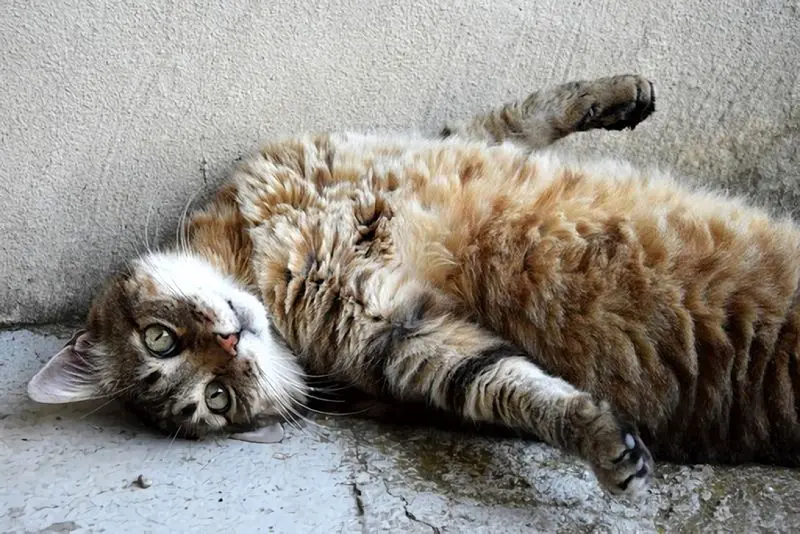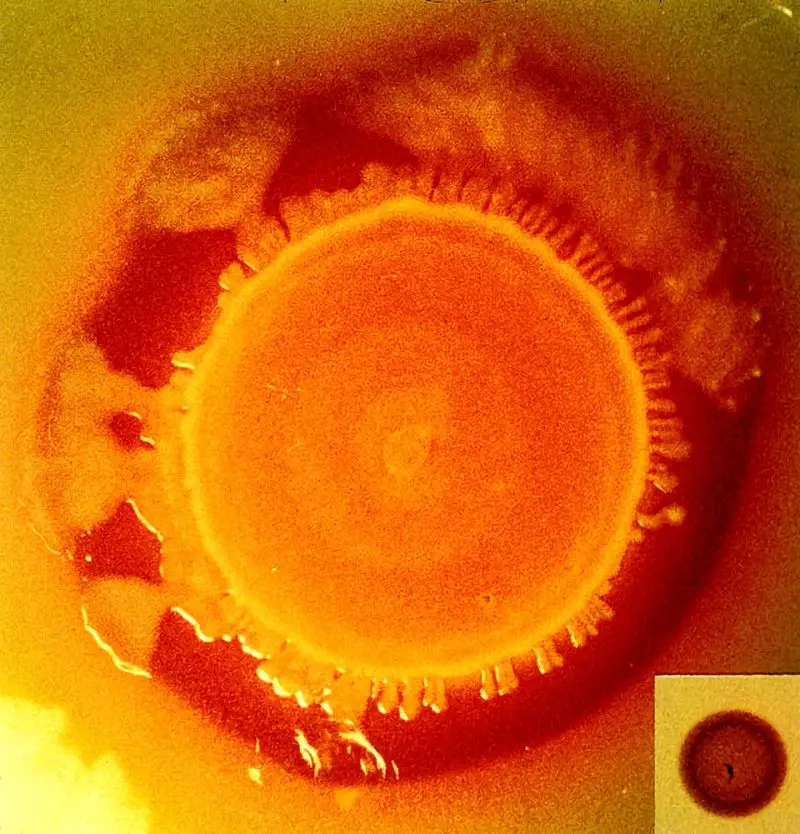 ↪ Doses - BUSULFAN
Chemistry - An alkylsulfonate antineoplastic agent, busulfan occurs as white, crystalline powder. Itis slightly soluble in alcohol and very slightly soluble in water.Storage, Stability, Compatibility Busulfan tablets should be stored in well-closed containers atroom... ↪ Read more
↪ Doses - BUSULFAN
Chemistry - An alkylsulfonate antineoplastic agent, busulfan occurs as white, crystalline powder. Itis slightly soluble in alcohol and very slightly soluble in water.Storage, Stability, Compatibility Busulfan tablets should be stored in well-closed containers atroom... ↪ Read more Veterinary Drug Handbook (VDH) is the reference veterinarians turn to when they want an independent source of information on the drugs that are used in veterinary medicine today.
-
 Is veterinary Liniment Gel safe for humans?
Is veterinary Liniment Gel safe for humans? -
 Giving Your Cat A Pill
Giving Your Cat A Pill -
 Dog Aggression
Dog Aggression -
 Dogs May Help Boost Infant Health
Dogs May Help Boost Infant Health -
 Animal-Assisted Therapy, Veterinary Social Work, & Social Work With People & Pets in Crisis
Animal-Assisted Therapy, Veterinary Social Work, & Social Work With People & Pets in Crisis -
 On-demand veterinary service gives advice on poorly pets
On-demand veterinary service gives advice on poorly pets -
 Should we stop throwing sticks for dogs?
Should we stop throwing sticks for dogs? -
 What does PU/PD mean in veterinary medicine?
What does PU/PD mean in veterinary medicine? -
 Can breathing in cat hair be harmful?
Can breathing in cat hair be harmful? -
 Bill calls for ban on sales of dogs, cats in Maine pet stores
Bill calls for ban on sales of dogs, cats in Maine pet stores -
 What does DVM stand for in veterinary?
What does DVM stand for in veterinary? -
 Common Meanings Of Cat Behavior
Common Meanings Of Cat Behavior -
 Curing Bad Cat Breath
Curing Bad Cat Breath -
 New Tracking Tool for Pathogen Investigators
New Tracking Tool for Pathogen Investigators -
Can binturongs be kept as pets?
-
 How long do instruments stay sterile after autoclaving veterinary?
How long do instruments stay sterile after autoclaving veterinary?
BUSULFAN
 ↪ Doses - BUSULFAN
Chemistry - An alkylsulfonate antineoplastic agent, busulfan occurs as white, crystalline powder. Itis slightly soluble in alcohol and very slightly soluble in water.Storage, Stability, Compatibility Busulfan tablets should be stored in well-closed containers atroom... ↪ Read more
↪ Doses - BUSULFAN
Chemistry - An alkylsulfonate antineoplastic agent, busulfan occurs as white, crystalline powder. Itis slightly soluble in alcohol and very slightly soluble in water.Storage, Stability, Compatibility Busulfan tablets should be stored in well-closed containers atroom... ↪ Read more Doses - BUSPIRONE HCL
 ↪ Description - BUSPIRONE HCL
Dogs: For low grade anxieties and fears: 2.5 - 10 mg per dog PO bid-tid; must be given every day. In highly fearful situations, may be more effective if combined with either acepromazineor diazepam. (Marder 1991)Cats: For low grade anxieties and fears: a)... ↪ Read more
↪ Description - BUSPIRONE HCL
Dogs: For low grade anxieties and fears: 2.5 - 10 mg per dog PO bid-tid; must be given every day. In highly fearful situations, may be more effective if combined with either acepromazineor diazepam. (Marder 1991)Cats: For low grade anxieties and fears: a)... ↪ Read more BUSPIRONE HCL
 ↪ Doses - BUSPIRONE HCL
Chemistry - An arylpiperazine derivative anxiolytic agent, buspirone HCl differs structurally fromthe benzodiazepines. It occurs as a white, crystalline powder with solubilities at 25°C of 865 mg/mlin water and about 20 mg/ml in alcohol.Storage, Stability,... ↪ Read more
↪ Doses - BUSPIRONE HCL
Chemistry - An arylpiperazine derivative anxiolytic agent, buspirone HCl differs structurally fromthe benzodiazepines. It occurs as a white, crystalline powder with solubilities at 25°C of 865 mg/mlin water and about 20 mg/ml in alcohol.Storage, Stability,... ↪ Read more Doses - BUPRENORPHINE HCL
 ↪ Description - BUPRENORPHINE HCL
Horses: For neuroleptanalgesia: a) 0.004 mg/kg IV (given with acepromazine 0.02 mg/kg) (Thurmon and Benson 1987) b) 0.006 mg/kg IV (given with xylazine 0.07 mg/kg) (Thurmon and Benson 1987)Rabbits & Rodents: As an analgesic (for control of acute or... ↪ Read more
↪ Description - BUPRENORPHINE HCL
Horses: For neuroleptanalgesia: a) 0.004 mg/kg IV (given with acepromazine 0.02 mg/kg) (Thurmon and Benson 1987) b) 0.006 mg/kg IV (given with xylazine 0.07 mg/kg) (Thurmon and Benson 1987)Rabbits & Rodents: As an analgesic (for control of acute or... ↪ Read more BUPRENORPHINE HCL
 ↪ Doses - BUPRENORPHINE HCL
Chemistry - A thebaine derivative, buprenorphine is a synthetic partial opiate agonist. It occurs as awhite, crystalline powder with a solubility of 17 mg/ml in water and 42 mg/ml in alcohol. Thecommercially available injectable product (Buprenex® - Norwich... ↪ Read more
↪ Doses - BUPRENORPHINE HCL
Chemistry - A thebaine derivative, buprenorphine is a synthetic partial opiate agonist. It occurs as awhite, crystalline powder with a solubility of 17 mg/ml in water and 42 mg/ml in alcohol. Thecommercially available injectable product (Buprenex® - Norwich... ↪ Read more Doses - BROMOCRIPTINE MESYLATE
 ↪ Description - BROMOCRIPTINE MESYLATE
Dogs: For treatment of pseudopregnancy: a) 10 micrograms/kg PO for 10 days or 30 micrograms/kg for 16 days. If vomiting is aproblem, may treat with metoclopramide. (Janssens 1986)Horses: For treatment of pituitary adenoma: a) 5 mg IM q12h. To... ↪ Read more
↪ Description - BROMOCRIPTINE MESYLATE
Dogs: For treatment of pseudopregnancy: a) 10 micrograms/kg PO for 10 days or 30 micrograms/kg for 16 days. If vomiting is aproblem, may treat with metoclopramide. (Janssens 1986)Horses: For treatment of pituitary adenoma: a) 5 mg IM q12h. To... ↪ Read more BROMOCRIPTINE MESYLATE
 ↪ Doses - BROMOCRIPTINE MESYLATE
Chemistry - A dopamine agonist and prolactin inhibitor, bromocriptine mesylate is a semisyntheticergot alkaloid derivative. It occurs as a yellowish-white powder and is slightly soluble in water andsparingly soluble in alcohol. Bromocriptine mesylate may... ↪ Read more
↪ Doses - BROMOCRIPTINE MESYLATE
Chemistry - A dopamine agonist and prolactin inhibitor, bromocriptine mesylate is a semisyntheticergot alkaloid derivative. It occurs as a yellowish-white powder and is slightly soluble in water andsparingly soluble in alcohol. Bromocriptine mesylate may... ↪ Read more Doses - BROMIDES, POTASSIUM BROMIDE, SODIUM BROMIDE
 ↪ Description - BROMIDES, POTASSIUM BROMIDE, SODIUM BROMIDE
Because of the extraordinarily long serum half life in dogs (it may take up to 4-5 monthsfor blood levels to reach steady state), some dosing regimens include an initial oral bolus loadingdose to reduce this time period. Whether to... ↪ Read more
↪ Description - BROMIDES, POTASSIUM BROMIDE, SODIUM BROMIDE
Because of the extraordinarily long serum half life in dogs (it may take up to 4-5 monthsfor blood levels to reach steady state), some dosing regimens include an initial oral bolus loadingdose to reduce this time period. Whether to... ↪ Read more BROMIDES, POTASSIUM BROMIDE, SODIUM BROMIDE
 ↪ Doses - BROMIDES, POTASSIUM BROMIDE, SODIUM BROMIDE
Chemistry - Potassium bromide occurs as white, odorless, cubical crystals or crystalline powder. One gram will dissolve in 1.5 ml of water. Potassium bromide contains 67.2% bromide. Each gramcontains 8.4 mEq (mmol) of potassium and... ↪ Read more
↪ Doses - BROMIDES, POTASSIUM BROMIDE, SODIUM BROMIDE
Chemistry - Potassium bromide occurs as white, odorless, cubical crystals or crystalline powder. One gram will dissolve in 1.5 ml of water. Potassium bromide contains 67.2% bromide. Each gramcontains 8.4 mEq (mmol) of potassium and... ↪ Read more Doses - BOLDENONE UNDECYLENATE
 ↪ Description - BOLDENONE UNDECYLENATE
Horses: a) 1.1 mg/kg IM; may repeat in 3 week intervals (most horses will respond with one or twotreatments) (Package Insert; Equipoise®¯Solvay) b) 1 mg/kg IM; repeated at 3 week intervals (Robinson 1987) Monitoring Parameters - 1)... ↪ Read more
↪ Description - BOLDENONE UNDECYLENATE
Horses: a) 1.1 mg/kg IM; may repeat in 3 week intervals (most horses will respond with one or twotreatments) (Package Insert; Equipoise®¯Solvay) b) 1 mg/kg IM; repeated at 3 week intervals (Robinson 1987) Monitoring Parameters - 1)... ↪ Read more BOLDENONE UNDECYLENATE
 ↪ Doses - BOLDENONE UNDECYLENATE
Chemistry - An injectable anabolic steroid derived from testosterone, boldenone undecylenate hasa chemical name of 17 beta-hydroxyandrosta-1, 4-dien-3-one. The commercially available product isin a sesame oil vehicle. It may also be known by the name... ↪ Read more
↪ Doses - BOLDENONE UNDECYLENATE
Chemistry - An injectable anabolic steroid derived from testosterone, boldenone undecylenate hasa chemical name of 17 beta-hydroxyandrosta-1, 4-dien-3-one. The commercially available product isin a sesame oil vehicle. It may also be known by the name... ↪ Read more Doses - BLEOMYCIN SULFATE
 ↪ Description - BLEOMYCIN SULFATE
(Note: Refer to specific treatment protocols for more information) Small Animals: For squamous cel carcinomas, lymphomas and other carcinomas: 10 U/m2 IV or SubQ once daily for 3-4 doses, then 10 U/m2 every 7 days. Maximum accumulative dose: 200 U/m2.... ↪ Read more
↪ Description - BLEOMYCIN SULFATE
(Note: Refer to specific treatment protocols for more information) Small Animals: For squamous cel carcinomas, lymphomas and other carcinomas: 10 U/m2 IV or SubQ once daily for 3-4 doses, then 10 U/m2 every 7 days. Maximum accumulative dose: 200 U/m2.... ↪ Read more Popular Diagnoses
Packed cell volume (PCV, hematocrit) Reflex ovulator Mucolytic Microfilaricide Bronchodilator Hematocrit Glucocorticoid Monoamine oxidase inhibitor (MAOI) ↪ All veterinary diagnoseOther Diagnoses
Descenting Diabetes Diestrus (also Diestrous) Dietary indiscretion Digestibility Digitalis glycosides Dilated cardiomyopathy (Canine) DistemperPopular Veterinary Clinics
VCA Welborn Animal Hospital, 7860 Washington Avenue Kansas City, KS 66112 USA MedVet Columbus, 300 East Wilson Bridge Road, Worthington, OH Rutland Veterinary Clinic & Surgical Center, 90 East Pittsford Road, Rutland, VT VCA Paradise Valley Emergency Animal Hospital, 6969 East Shea Boulevard Suite 150 Scottsdale, AZ 85254 USA Connecticut Veterinary Center & Pet ER, 470 Oakwood Ave West Hartford, CT 06110 USA Norway Veterinary Hospital, 10 Main St P.O. Box 273 Norway, ME 04268 USA Craig Road Animal Hospital, 5051 West Craig Road, Las Vegas, NV Abri Veterinary Hospital Inc, 1449 Trademart Boulevard Winston-Salem, NC 27127 USA ↪ All veterinary clinicsOther Veterinary Clinics
Sugar House Veterinary Hospital, 2206 McClelland Street Salt Lake City, UT 84106 USA East Valley Veterinary Clinic, 2675 Parleys Way, Salt Lake City, UT West Valley Veterinary Clinic, 3875 West 3500 South West Valley City, UT 84120 USA Beach Pet Hospital, 316 North Great Neck Road, Virginia Beach General Booth Veterinary Hospital, 2209 Princess Anne Rd. Virginia Beach, VA 23456 USA Hope Springs Veterinary at Pembroke, 4548 Wishart Road Virginia Beach, VA 23455 USA Pet Care Veterinary Hospital, 5201 Virginia Beach Blvd Virginia Beach, VA 23462 USA Bostic Veterinary Hospital, 5269 CHALLEDON DRIVE VIRGINIA BEACH, VA 23462 USAPopular Drugs
DOXYLAMINE SUCCINATE Doses - PENICILLIN V POTASSIUM Doses - METHYLPREDNISOLONE, METHYLPREDNISOLONE ACETATE, METHYLPREDNISOLONE SODIUM SUCCINATE ACEPROMAZINE MALEATE Doses - PREDNISOLONE, PREDNISOLONE SODIUM SUCCINATE, PREDNISOLONE ACETATE, PREDNISONE Doses - FURAZOLIDONE Doses - FERROUS SULFATE Doses - LEVAMISOLE ↪ All veterinary drugOther Drugs
Doses - PANCRELIPASE PANCURONIUM BROMIDE Doses - PANCURONIUM BROMIDE PENICILLAMINE Doses - PENICILLAMINE PENICILLIN G Doses - PENICILLIN G PENICILLIN V POTASSIUMPopular Terms
Subalbinotic Steatis Uteroverdin Paradoxical CSF acidosis Figure of 8 suture pattern Nerve root signature Ovariohysterectomy Abrev OVH Signalment ↪ All veterinary termOther Terms
Pinion Bos taurus Bougie Bovine Bovine somatotropin (bst) Bowman's capsule Box stall Boxlockveterinary-help.com
© 2011-2026 Veterinary Clinics, Diagnoses, Terms and Drug Handbook Online

